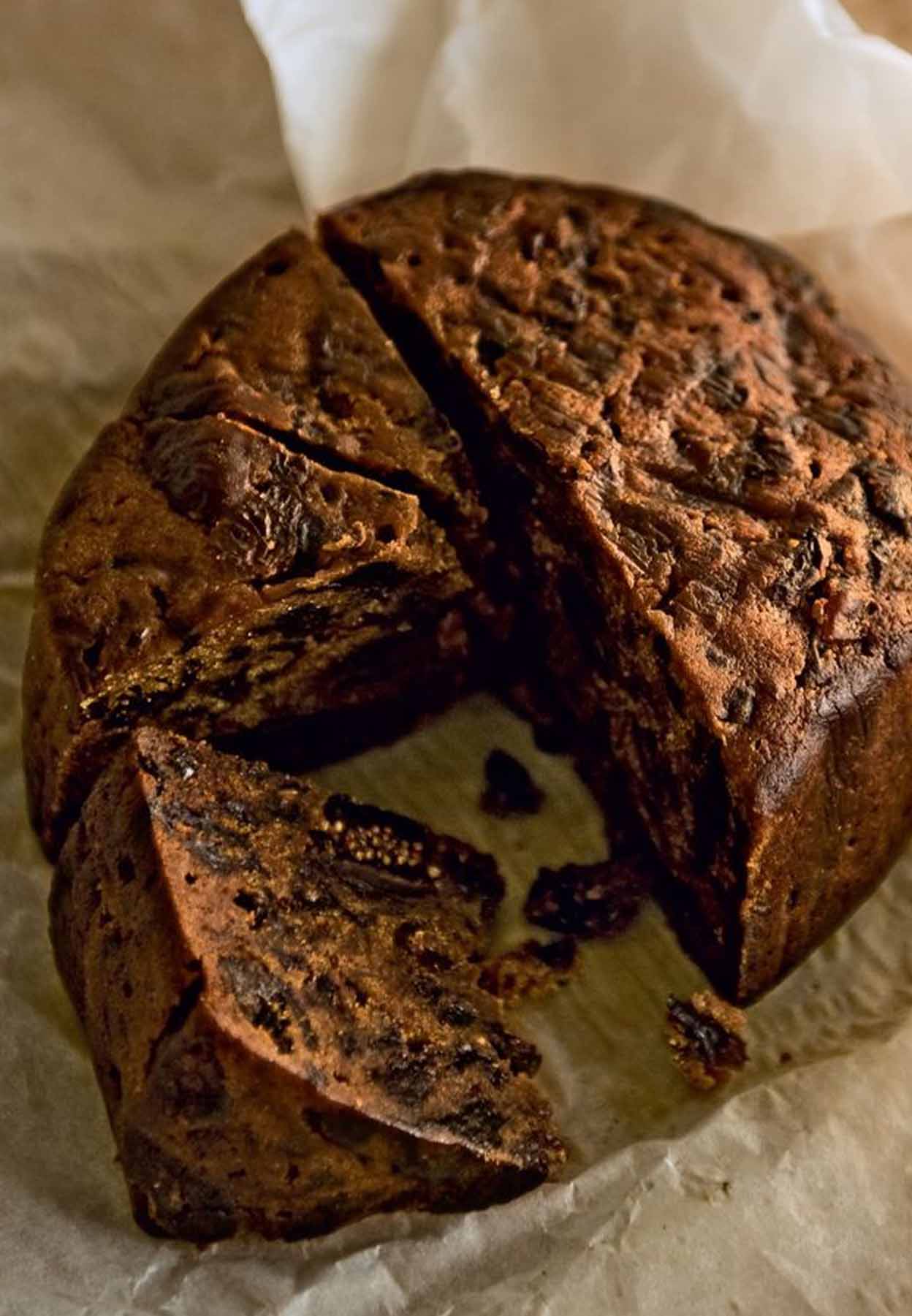
Bourke Street Bakery Christmas Cake
Makes
12
Ingredients
55g Caster Sugar
55ml Water
160ml Brandy
90g Sultanas
80g Currants
80g Pitted Prunes, Chopped
80g Fresh Pitted Dates, Chopped
150g Raisins
55g Mixed Peel
135g Dried Figs, Chopped
100g Plain Flour
1/2Tsp Mixed Spice
15g Ground Almonds
110g Unsalted Butter
100g Soft Brown Sugar
2Tsp Bourke Street Bakery Raw Honey
2Tbsp Treacle
1Tsp Marmalade
3 Eggs, Lightly Beaten
150ml Brandy, For Feeding
Description
This is a dense cake that is rich in fruit. Like all good fruit cakes, it needs to be made a few months in advance and after baking it needs to be soaked with alcohol every 3–4 days for up to 10 weeks. These cakes can be heated in a steamer or microwave and eaten warm like a pudding, served with brandy butter. You can make the brandy butter a few weeks ahead to lighten your load on the big day.
Method
To make the fruit soak, put the sugar in a saucepan with the water and bring to the boil over high heat, stirring to dissolve the sugar. Remove from the heat and allow to cool. Pour the brandy and cooled sugar syrup into an airtight container and add the fruit, mixing well to coat. Cover and keep at room temperature for about 5 weeks. During the first week you will need to stir the fruit daily; for the following four weeks you will only need to stir the fruit once a week — you should be left with a thick syrupy fruit mix. If you’re not ready to make the cake at this time, refrigerate the fruit for up to 2 months – it will only get better.
When you are ready to make the cake, preheat the oven to 190°C (375°F/ Gas 5). Grease two 12.5 cm (4¾ inch) round cake tins and line the base and side of each tin with baking paper.
Sift the flour, mixed spice and ground almonds together in a bowl. In the bowl of an electric mixer fitted with a paddle attachment, cream the butter; sugar, honey, treacle and marmalade, until pale. Add the eggs, a little at a time, ensuring each amount is completely incorporated before adding more – take care the mixture doesn’t curdle at this stage – if you see it starting to separate slightly, add a small amount of the flour mix to bring it back together. With the motor still running, add the flour — stop as soon as it is combined. Using a gloved hand fold in 900 g (2 1b) of the fruit soak, until combined.
Divide the mixture evenly between the prepared cake tins, tapping heavily on the bench to settle. Place the cake tins on an oven tray and place in the oven. Immediately lower the temperature to 160°C (315°F/ Gas 2-3) and bake for about 40 minutes. Turn the tray and bake for 20 minutes further. The cakes are cooked when a skewer inserted into the centre of each cake comes out clean. It may take up to 1 hour 20 minutes to bake — cover the top of the cake loosely with baking paper if the top starts to brown. Remove from the oven and leave in the tins to cool.
Make about 20-30 holes in each cake using a skewer and pushing it about three-quarters of the way through the cake. Cut two large sheets of foil and two large sheets of baking paper. Place each piece of foil on the bench and lay a sheet of baking paper over each. Working with one cake at a time, place the cake on the baking paper and draw the paper and foil up around the cake scrunching it together on top to form a container that will hold any alcohol, which may soak through when feeding the cakes. Repeat with the remaining cake.
To feed the cakes, open the top of the foil wrapping and brush over about 1 teaspoon of brandy. Repeat this every 3-4 days for 8-10 weeks or until the alcohol seems not to be soaking in anymore. Be sure the foil is well closed after each feed to stop evaporation, which will lead to the cakes drying out. It’s best to keep the cakes in an airtight container to keep ants or any little critters that like cake (and alcohol) at bay. Once the cakes are fed, wrap them very well and store them in the container in a dark cool place until ready to serve.
